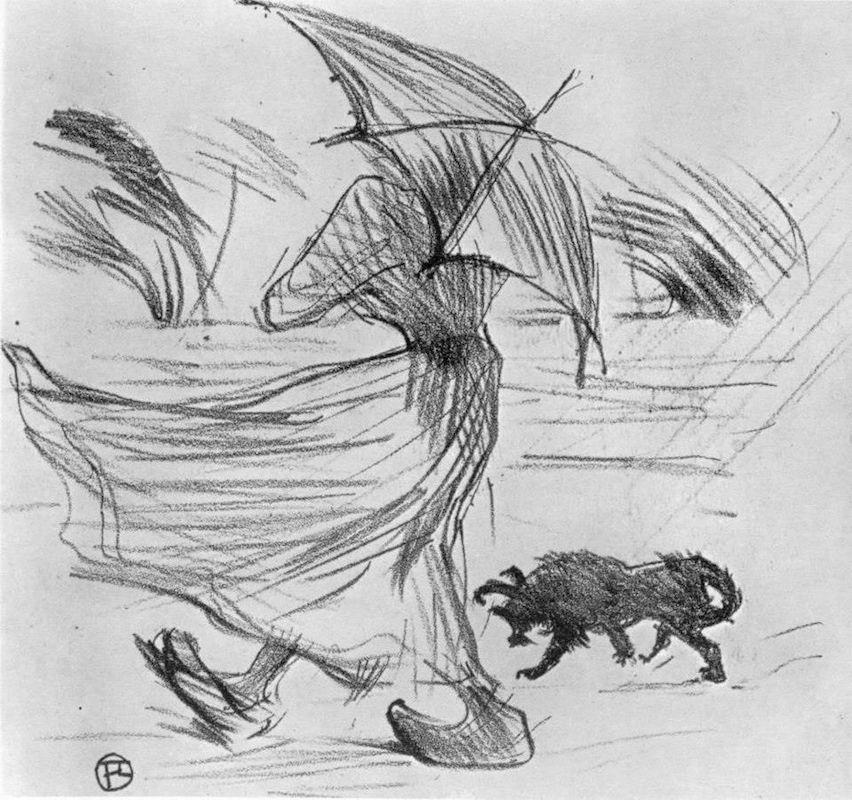
When I go to an exhibition of an artist whose work I’m already familiar with I always look to see something new, a work I didn’t know or an angle I hadn’t thought of before. The Toulouse-Lautrec exhibition at the Kunsthal included a small drawing, which most people passed by, but which is a perfect example of what French philosophers Deleuze and Guattari mean when they write that art “preserves”. “What is preserved - the thing or the work of art - is a bloc of sensations, that is to say, a compound of percepts and affects.” A painting or a movie does not so much depict a scene or a setting, it renders the sensation it entails.
The drawing shows a woman and a dog being tormented by rain and wind. The woman’s coat is blown forward, so are the dog’s hair and tail. If you look closely you can see that the pencil strokes rendering the dog’s coat are in the direction of the wind. Of course they are, you might say. But what this means is that the wind, as it were, also blew against the pencil strokes. When you look at this drawing you instantly sense that this is what it is like to walk through the rain, the wind blowing in your back, pulling at your umbrella. But what I found totally intriguing about this drawing is its title, "Ce qui dit la pluie", which translates as "What the rain says or tells".
There is a similar sense of movement in Toulouse-Lautrec’s drawings of dancers and horses. His dancers appear from a few twirls and swirls. He does not draw the dancer, but the motions. His lithographs and sketches of Loie Fuller consist of little more than abstract shapes, in which we can barely detect a head and a pair of legs. When he was commissioned to make a series of lithographs with a horse racing theme, "The Jockey" (1899), Toulouse-Lautrec forsaked convention by painting the jockeys from behind. He does not start from an anatomically correct horse, but tries to capture the strength and speed of the horses in motion. By choosing this particular viewing angle he puts the viewer as it were on one of the trailing horses.
As I walked through the exhibition I was also struck by Toulouse-Lautrec’s humanity. Henri de Toulouse-Lautrec is best known as a chronicler of the nightlife of late 19th century Paris. He used to frequent the nightclubs and cafés of Montmartre, befriending the dancers and prostitutes, making countless sketches as they comb their hair or just lie in bed. As Jonathan Jones wrote in The Guardian (September 11, 2004) “Toulouse-Lautrec did not picture the world of the dancers and prostitutes from outside: he lived in it.” From time to time he rented a room in a brothel, where he made drawings of the prostitutes and their clientele.
I still find it fascinating to see how with a few pencil strokes an artist like Toulouse-Lautrec renders a mood and a character. The men in his drawings and posters are often caricatures of power with large protruding chins and noses and big fat faces. By contrast his women are drawn with much warmth and empathy.
Henri Toulouse-Lautrec: Paris by Night is at the Kunsthal, Rotterdam until 5 June 2006.